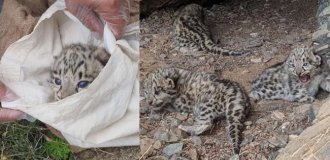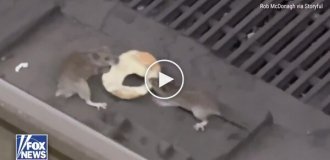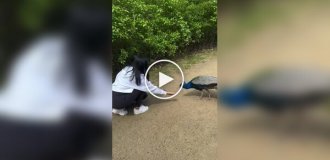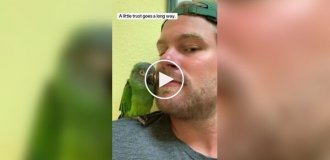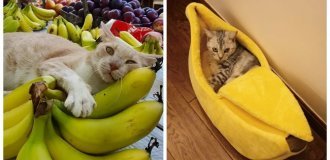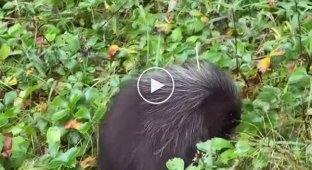Two-colored porcupine: an interesting and little-studied animal (9 photos)
The two-colored porcupine is an unusual animal from the family of American porcupines, which was discovered back in 1844. I suggest you find out a few facts about him. 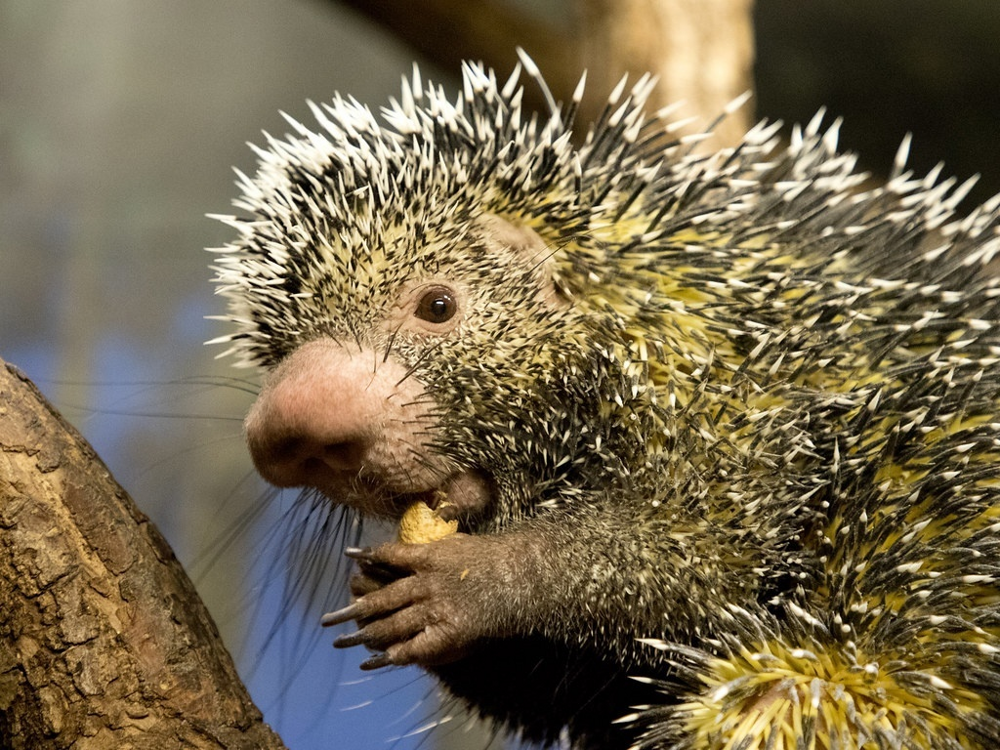
Do you know what a bicolored porcupine can teach us? Do not be afraid to be yourself, use all development opportunities, be able to calmly treat all injustices and learn to solve them. Let's start with this: here's all the injustice of the scientific world at once.
Once - our today's heroes are very widespread in South America and are not an endangered species. Two - in biology there are many ways to collect information, from a banal journal with notes to cool camera traps and analysis of excrement. Three - if you try hard and take, for example, binoculars, porcupines can be easily found. These are not tardigrades! So what's the result? And nothing! Two-colored porcupines were discovered back in 1844, and then they were simply forgotten and killed. Well, how could you not study this unusual cutie inside and out?! 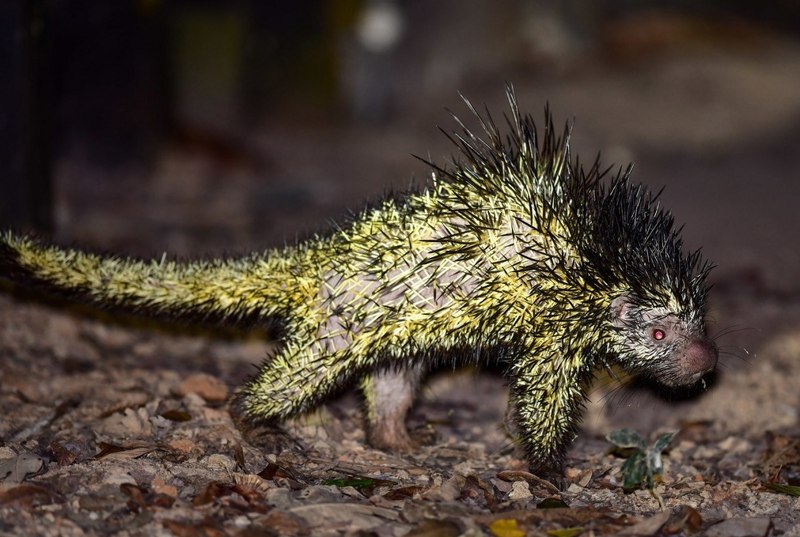
As you already understood from this indignant tirade, very little is known about our needle carriers.
So, the two-colored porcupine is a rather extravagant animal from the American porcupine family. Here you need to be very careful not to confuse the animal with the Eurasian porcupine - the same guy with huge spines on his back. American animals are distant relatives of them. According to the family evolutionary tree and genetic analyses, our hero is much more closely related to capybaras and guinea pigs. 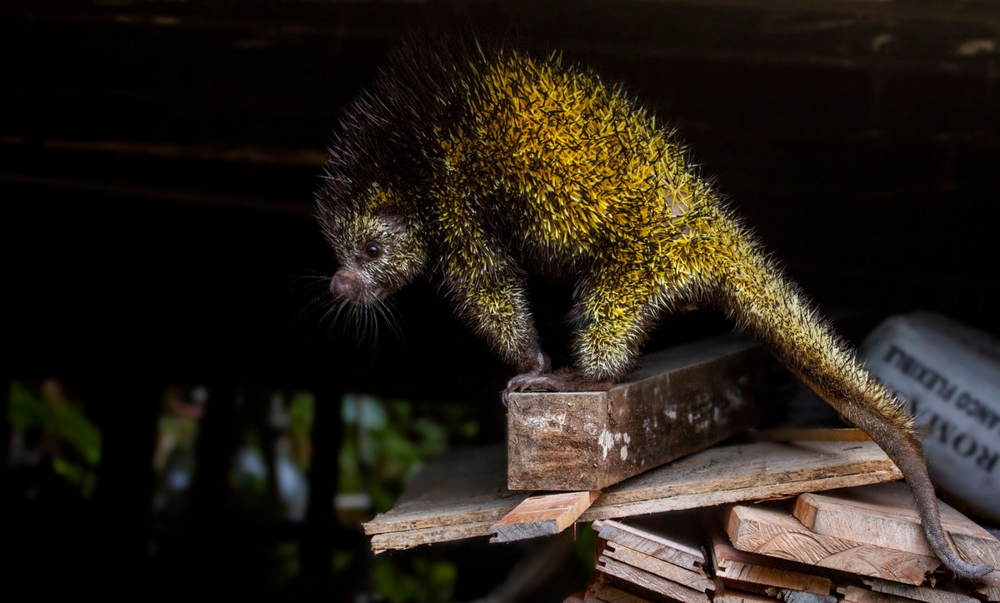
You can distinguish porcupines of the New World from porcupines of the Old World by the characteristic facial expression, unusual color, size and lifestyle. Let's start from the beginning: the animal's nose looks like it stuck it in a beehive or went to a bad plastic surgeon. This, of course, did not happen, and their nose is absolutely natural. But a potato that covers half the face looks a little strange compared to the neat little eyes and completely inconspicuous ears. 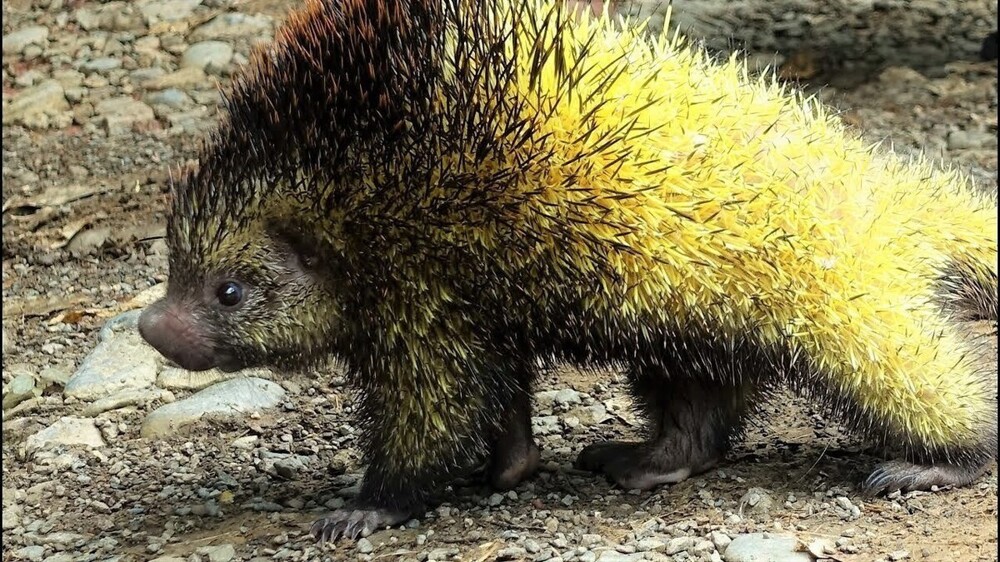
The entire half-meter body of the animals is covered with sharp needles, the longest of which grow on the withers and front of the back. This is another difference from Eurasian porcupines, in which the entire length falls on the back of the body. Well, the color combination of black and yellow could easily make the little animals the stars of an advertisement for a well-known cellular company. This contrast is achieved due to the fact that the porcupine’s sebaceous glands secrete a special wax-like substance that envelops and colors the quills. 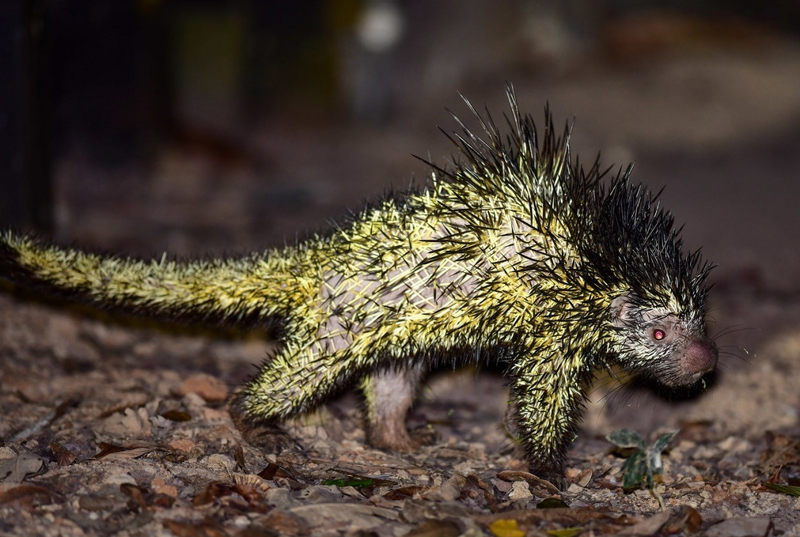
Like all porcupines, our heroes use their spines to protect themselves from predators: the tips of the quills are barbed, like a harpoon. Because of this, they very easily pierce the skin of stupid, inexperienced predators, but have difficulty leaving it. 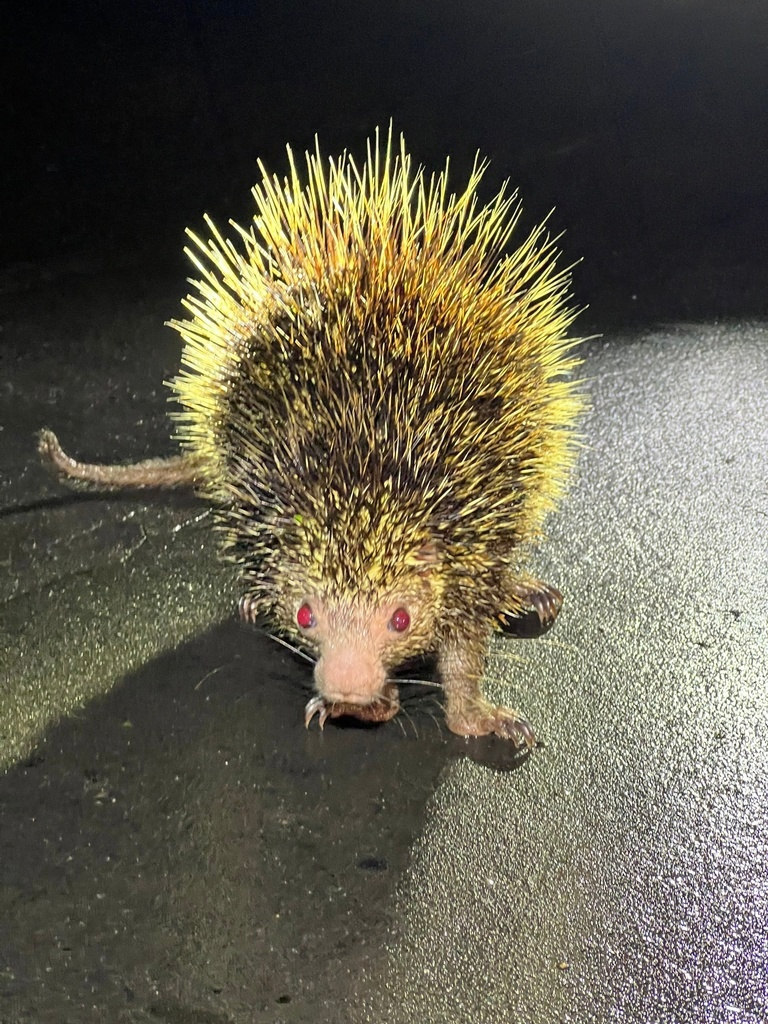
Well, if you look at the two-colored porcupines more closely, you can notice, in addition to the quills, a very unusual detail - a long, thick and semi-bald tail. It looks like a porcupine's fifth leg, and is used in much the same way: animals spend most of their lives in trees, where an extra limb comes in very handy. With the help of a semi-prehensile tail and long claws on their paws, the animals are excellent at climbing branches and getting food from the very tops - fruits, seeds, leaves and other green stuff. 
Porcupines reach sexual maturity at about two years of age, but it is unknown at what age they will start making dolls and how many years they live in general. Little is known about the animal’s personal life. Biologists have not studied any intimate or social details of this species. 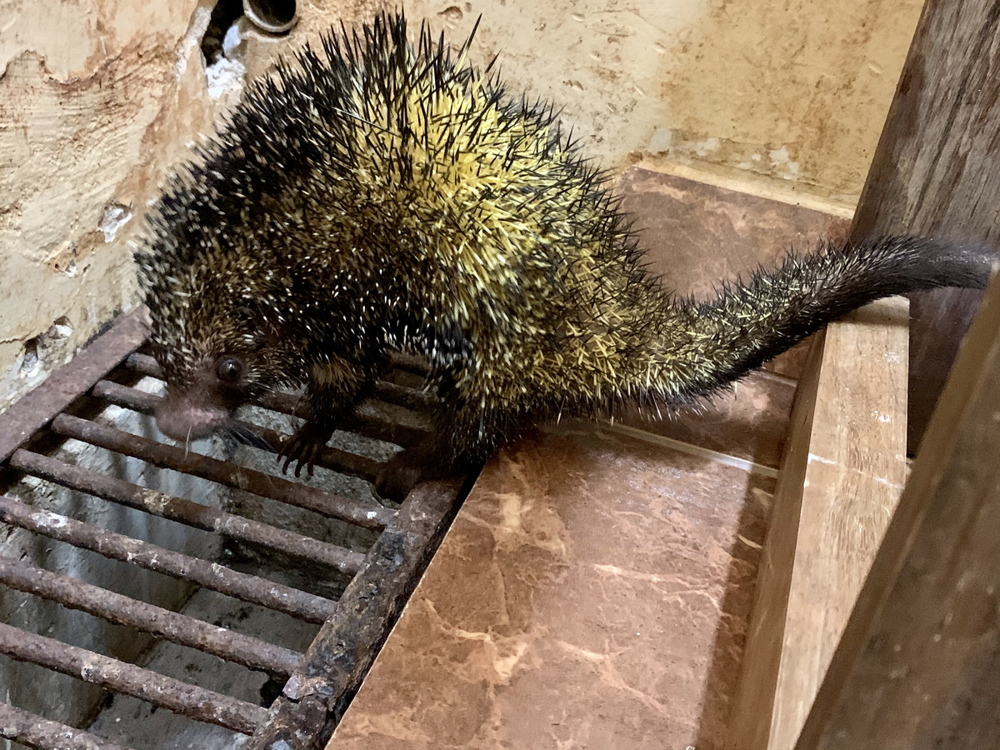
Even the gestation period for the two-colored porcupine was calculated only on the basis of general information about the family: pregnancy lasts up to 6-7 months, and during this time the porcupine mother gives birth to only one porcupine. Yes, it’s a long time, yes, it’s not long, but from the first minutes of life the baby is already sighted and walking. But despite all its capacity, the baby porcupine will stay in the nest for a couple of weeks, after which it will emerge with its parentsher to explore the big world. 
